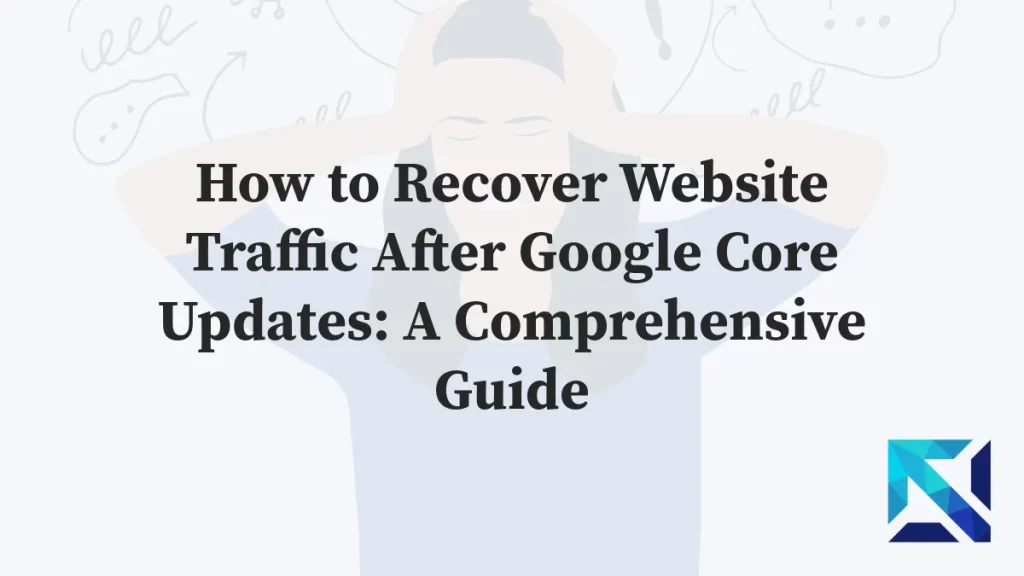In the realm of digital marketing, words are powerful tools. They inform, engage, and persuade.
But not all words are created equal.
In the battle of Copywriting vs. Content writing, understanding the difference is crucial. It’s not just about crafting words, but about crafting the right words.
Content writing and website copywriting though similar, serve distinct purposes. They target different aspects of a reader’s journey.
Content writing aims to inform and engage. It’s about building a relationship with the reader.
On the other hand, copywriting seeks to persuade and convert. It’s about driving the reader to take action.
In this article, we delve into these two disciplines. We’ll explore their differences, their similarities, and how to use them effectively.
Whether you’re a marketer, a business owner, or a curious reader, this guide will shed light on the art of crafting words that inform, engage, or convert.

Understanding the Basics: Definitions and Differences
Before we delve into the nuances, let’s define our terms. Content writing and website copywriting are often used interchangeably, but they are not the same.
Each has its own purpose, style, and technique.
- Content writing is about creating informative, engaging material.
- Copywriting is about crafting persuasive messages to drive action.
What is Content Writing?
Content writing is a form of writing that aims to educate, inform, and engage readers. It’s about providing value to the reader.
This could be in the form of blog posts, articles, white papers, or social media posts. The goal is to provide useful, relevant information.
Content writing is not just about selling a product or service. It’s about building a relationship with the reader, establishing trust, and positioning the brand as a thought leader in its industry.
What is Website Copywriting?
Copywriting, on the other hand, is a type of writing that aims to persuade. It’s about driving the reader to take a specific action.
This could be making a purchase, signing up for a newsletter, or clicking on a link. The goal is conversion.
Copywriting is sales-oriented. It’s about understanding the reader’s needs and desires, and showing how a product or service can meet those needs. It’s about crafting a compelling message that motivates the reader to act.
Goals and Objectives: Informing vs. Persuading
The goals and objectives of content writing and copywriting are distinct. They serve different purposes in a marketing strategy.
Understanding these differences is key to using each effectively.
The Primary Goal of Content Writing
The primary goal of content writing is to inform and engage. It’s about providing value to the reader.
Content writers aim to educate their audience about a topic. They provide insights, tips, and useful information.
The goal is not to sell, but to build a relationship with the reader. It’s about establishing trust and credibility.
The Primary Goal of Copywriting
The primary goal of copywriting, on the other hand, is to persuade. It’s about driving the reader to take a specific action.
Copywriters craft compelling messages that motivate the reader to act. They highlight the benefits of a product or service and create a sense of urgency.
The goal is conversion. It’s about turning readers into customers.
What are some examples of copywriting?
Here are some examples of copywriting, categorized by their purpose:
Driving Sales and Conversions:
Product Descriptions: Compelling product descriptions highlight features, benefits, and value propositions to entice customers to purchase. For instance, “This ergonomic keyboard reduces wrist strain and boosts your typing productivity.”
Landing Pages: Landing pages use persuasive copy to convert visitors into leads or paying customers. They often include clear CTAs (Calls to Action) like “Buy Now” or “Sign Up for Free Trial.”
Sales Emails: Effective sales emails use a mix of informative content about promotions and persuasive language to encourage recipients to make a purchase. Scarcity tactics (“Limited time offer!”) can be used strategically.
Advertisements (Print & Digital): Eye-catching headlines and concise copy aim to grab attention, spark interest, and drive viewers to take action (visit a website, learn more, etc.).
Examples:
A billboard advertisement for a fast-food restaurant: “Double cheeseburger cravings? We’ve got you covered. Satisfy your hunger for just $5.99!” (Benefit-driven, clear offer)
A social media ad for a fitness app: “Get fit and feel fantastic! Download our free app and start your 7-day trial today!” (Benefit-driven, strong CTA)
Generating Leads and Engagement:
Call to Actions (CTAs): Effective CTAs are short phrases that tell users exactly what you want them to do next, such as “Subscribe Now,” “Download Our Free Ebook,” or “Get a Quote.”
Pop-up Offers: Well-crafted pop-up offers to incentivize users to provide their email addresses or engage with a particular promotion.
Email Opt-in Forms: Clear and concise copy on opt-in forms encourages users to subscribe to email lists by highlighting the benefits of receiving updates, promotions, or exclusive content.
What are some examples of content writing?
Website content writing encompasses a wide range of text formats that inform, engage, and convert visitors to your website. Here are some specific examples, categorized by their function:

Informational Content:
Homepage: Your homepage should clearly communicate your brand value proposition, target audience, and the key benefits you offer. It should also provide clear navigation to other parts of the website.
About Us: Tell your brand story, highlight your company culture and values, and showcase your team’s expertise on the “About Us” page.
Services/Products: Provide detailed descriptions of your services or products, highlighting features, benefits, and how they solve customer problems.
FAQs: A well-crafted FAQ section addresses common questions and concerns visitors might have, saving them time and frustration.
Blog: A blog is a goldmine for informative content. Publish valuable blog posts related to your industry, addressing your target audience’s pain points and establishing your brand as a thought leader.
Help Center/Knowledge Base: Create a comprehensive help center or knowledge base with articles, tutorials, and troubleshooting guides to empower users and reduce customer support inquiries.
Engaging Content:
Case Studies: Showcase successful client projects or how your products/services have benefited others. This builds trust and social proof, demonstrating the value you offer.
Customer Testimonials: Positive customer testimonials add credibility and social proof. Include them strategically on your website to build trust with potential customers.
Company Culture Content: Highlight your company culture, values, and team through blog posts, articles, or videos. This can attract potential employees and foster brand loyalty with existing customers.
Conversion-Oriented Content:
Landing Pages: Landing pages are designed to convert visitors into leads or paying customers. They typically focus on a specific product, service, or offer, and include clear CTAs (Calls to Action) like “Buy Now” or “Sign Up for Free Trial.” Landing page content should be benefit-driven and persuasive.
Product Descriptions: Compelling product descriptions highlight features, benefits, and value propositions to entice customers to purchase. Focus on the problems your product solves and how it improves users’ lives.
Call to Actions (CTAs): Effective CTAs throughout your website tell users exactly what you want them to do next, such as “Contact Us Today,” “Download Our Brochure,” or “Get a Quote.” Make sure your CTAs are clear, concise, and strategically placed.
Can content writing include copywriting elements?
content writing can and often does include website copywriting elements! In fact, the best content writing strategies leverage elements of copywriting to subtly nudge readers towards a desired action, like subscribing to a newsletter or contacting your business.
Here’s how content writing and website copywriting can work together:
Content Informs, Copywriting Persuades (but not always strictly)
Content Writing: Focuses on informing, educating, and engaging the audience. It establishes brand expertise, builds trust, and drives organic traffic.
Copywriting: Aims to persuade the audience to take a specific action, such as making a purchase, signing up for a free trial, or contacting the business.
The Overlap: The Art of Weaving in Persuasion
Content with a Gentle Nudge: Informative content can subtly incorporate persuasive elements to guide readers towards a desired action.
For instance, a blog post on “The Best Hiking Trails for Beginners” might conclude by mentioning a downloadable guide (with signup required) that provides detailed trail maps and recommendations.
Copywriting with Informative Content: Effective copywriting often includes informative elements to build trust and establish the value proposition.
A landing page promoting a new fitness app might use persuasive headlines and CTAs (“Get Fit Today!”) but also include informative sections detailing the app’s features, benefits, and success stories.
Benefits of Combining Content Writing and Website Copywriting:
Enhanced User Experience: By providing informative content alongside subtle persuasive elements, you create a more well-rounded user experience that educates and gently nudges them toward the next step.
Improved Conversion Rates: Strategic use of copywriting elements within content can increase the chances of visitors taking a desired action on your website.
Stronger Brand Storytelling: Weaving copywriting elements into your content allows you to seamlessly integrate your brand message and encourage audience engagement.
Remember, the key is to maintain a balance. Content should remain informative and valuable to the audience while copywriting elements should be subtle and relevant to the specific content piece.
Audience and SEO: Knowing Who and How to Target
Both content writing and copywriting require a deep understanding of the target audience. They also require knowledge of SEO, but the approach differs in each case.
Understanding Your Audience
In content writing, understanding your audience means knowing what information they need. It’s about identifying their pain points and providing solutions.
Content writers aim to create content that resonates with the reader. They want to engage the audience and build a relationship.
In copywriting, understanding your audience is about knowing what motivates them. It’s about identifying their desires and fears, and using this knowledge to persuade them to act.
SEO in Copywriting vs Content Writing
SEO plays a crucial role in content writing. Content writers use keywords to help their content rank higher in search engine results.
They aim to provide valuable content that answers the user’s query. This helps to attract organic traffic and improve the site’s visibility.
In copywriting, SEO is also important, but the focus is more on conversion. Copywriters use keywords to attract the right audience, but their main goal is to persuade the reader to take a specific action.
Formats and Mediums: Where Words Live
Content writing and copywriting can be found in various formats and mediums. Each has its own unique characteristics and requirements.
The choice of format and medium depends on the message, the audience, and the goals of the communication.
Content Writing Formats
Content writing is often found in blogs, articles, and guides. It’s also used in social media posts, newsletters, and white papers.
These formats allow for in-depth exploration of a topic. They provide value to the reader and help to establish the brand as a thought leader.
Copywriting Formats
Website copywriting, on the other hand, is typically found in advertisements, sales letters, and product descriptions. It’s also used in email marketing campaigns, landing pages, and call-to-action buttons.
These formats are designed to grab the reader’s attention. They aim to persuade the reader to take a specific action, such as making a purchase or signing up for a newsletter.
Techniques and Strategies: Crafting the Message
Crafting the right message is crucial in both content writing and copywriting. The techniques and strategies used can greatly influence the effectiveness of the communication.
Storytelling in Content Writing
In content writing, storytelling is a powerful tool. It helps to engage the reader and make the content more relatable.
Stories can be used to illustrate a point, share experiences, or explain complex ideas. They can make the content more memorable and impactful.
The key to effective storytelling is to make the reader care. This can be achieved by creating relatable characters, building suspense, and evoking emotions.
Persuasive Techniques in Copywriting
In copywriting, persuasion is the name of the game. The goal is to convince the reader to take a specific action.
This can be achieved through various techniques. These include creating a sense of urgency, using emotional triggers, and highlighting the benefits of the product or service.
The use of social proof, such as testimonials or reviews, can also be very effective. It helps to build trust and credibility, making the reader more likely to convert.
Measuring Success: Metrics for Content and Copy
The success of content writing and copywriting can be measured in different ways. The metrics used will depend on the goals and objectives of the writing.
Content Writing Success Metrics
For content writing, success is often measured by engagement metrics. These can include page views, time spent on page, and social shares.
Another important metric is the organic search ranking. High-quality, SEO-optimized content can help to improve a website’s visibility in search engine results.
Copywriting Success Metrics
For copywriting, the key metric is conversion rate. This measures the percentage of readers who take the desired action after reading the copy.
Other important metrics include click-through rate and return on investment. These can provide valuable insights into the effectiveness of the copy and the overall marketing strategy.
The Evolution of Writing for Digital Platforms
The digital age has significantly transformed the landscape of content writing and copywriting. The rise of digital platforms has necessitated a shift in how we craft and deliver our messages.
The Digital Impact on Content Writing
Content writing has evolved to cater to the digital audience. The focus is now on creating content that is not only engaging but also optimized for search engines.
This means that content writers need to be well-versed in SEO practices. They need to understand how to use keywords effectively and how to structure content for online readability.
The Digital Impact on Copywriting
Similarly, digital platforms have also influenced the practice of copywriting. Copywriters now need to craft messages that can capture attention in an increasingly crowded digital space.
This involves understanding the nuances of different digital platforms. It also requires the ability to create compelling calls-to-action that can drive online conversions.
Golden Writing Tips for Content and for Copywriting

Whether you’re crafting informative content or persuasive copy, here are some golden tips to elevate your writing:
Content Writing:
Know Your Audience: Tailor your content to the specific needs, interests, and pain points of your target audience. Use language they understand and address their challenges.
Focus on Value: Provide valuable, actionable information that solves problems, educates readers, or entertains them. Establish yourself as a thought leader in your niche.
Clear and Concise Communication: Strive for clear, concise, and easy-to-read writing. Use active voice, avoid jargon, and break down complex topics into digestible chunks.
Strong Structure and Organization: Organize your content with a clear structure, using headings, subheadings, and bullet points to improve readability and guide readers through your points.
SEO Optimization: Incorporate relevant keywords throughout your content (without keyword stuffing) to improve search engine ranking and organic traffic.
Storytelling Power: Weave storytelling elements like anecdotes, case studies, or data to engage readers and make your content more memorable.
Call to Action (CTA): Subtly nudge readers towards a desired action at the end of your content. This could be subscribing to a newsletter, downloading an ebook, or visiting another relevant page on your website.
Copywriting:
Benefit-Driven Approach: Focus on the benefits your product or service offers to the customer. Highlight how it solves their problems or improves their lives.
Strong Headlines and CTAs: Craft compelling headlines that grab attention and clear CTAs that tell users exactly what you want them to do next (Buy Now, Sign Up Today, etc.)
Urgency and Scarcity: (Use strategically) Create a sense of urgency or scarcity to encourage immediate action. For example, limited-time offers or limited quantities can motivate purchases.
Emotional Connection: Tap into your audience’s emotions to evoke desire, trust, or a sense of urgency. This can increase the effectiveness of your copy.
Power of Words: Use strong verbs, persuasive language, and benefit-oriented adjectives to paint a vivid picture of the value you offer.
Data and Social Proof: Back up your claims with data, statistics, or positive customer testimonials to build trust and credibility.
A/B Testing: Test different variations of your copywriting elements (headlines, CTAs, etc.) to see what resonates best with your audience and optimize for conversions.
Bonus Tip: Proofread and Edit Relentlessly!
Typos and grammatical errors can damage your credibility. Proofread your content meticulously and consider using a grammar checker as a safety net.
Conclusion: Integrating Content Writing and Copywriting for Maximum Impact
In the digital marketing landscape, content writing and copywriting are two sides of the same coin. Both play crucial roles in communicating with audiences and achieving business objectives.
Content writing informs, educates, and engages. It builds brand awareness and fosters long-term relationships with customers. On the other hand, copywriting persuades and converts. It drives immediate action and contributes directly to sales.
However, the most effective marketing strategies often integrate both. A well-crafted piece of content can inform and engage readers, while a persuasive call-to-action can drive them to convert. This synergy between content writing and copywriting can lead to maximum impact.
In conclusion, understanding the nuances between content writing and copywriting is essential for crafting words that inform, engage, or convert. Whether you’re a digital marketer, a content creator, or a business owner, harnessing the power of both can help you succeed in the digital space.
What skills are important for both copywriting and content writing?
Both copywriting and content writing share some core skills:
Strong writing skills: Grammar, clarity, conciseness, and engaging style are essential.
Understanding your audience: Knowing who you're writing for and tailoring your content accordingly.
SEO knowledge: Basic understanding of search engine optimization to improve visibility.
Research skills: Ability to gather information and present it accurately.
How can I become a better copywriter or content writer?
Be a writing pro:
Read & write daily: Practice makes perfect.
Learn SEO basics: Get found in searches.
Know your audience: Write what they want to read.
Craft catchy headlines: Grab attention fast.
Focus on benefits: Solve their problems.
Track & improve: Learn from what works.
Which pays better, copywriting or content writing?
Generally, copywriting tends to pay better than content writing. This is because copywriting often has a more direct impact on a company's bottom line by driving sales or conversions. However, there are exceptions, and highly skilled content writers in specific niches can earn competitive salaries.
What is the difference between copyright and content writing?
Copyright is not a type of writing, but rather a legal concept. It refers to the ownership of intellectual property, specifically the exclusive right to control the creation and distribution of creative works like writing.
Content writing, on the other hand, is a type of writing that focuses on informing, educating, or entertaining an audience.
What is SEO writing?
SEO writing is the art of creating content that both users and search engines love. It involves:
Using relevant keywords: Target words and phrases people search for to find your content.
Creating high-quality content: Informative, engaging, and valuable for your audience.
Optimizing for search engines: Structure your content and use technical elements search engines consider when ranking websites.
Goal: Get your website seen by the right people at the right time in search results




